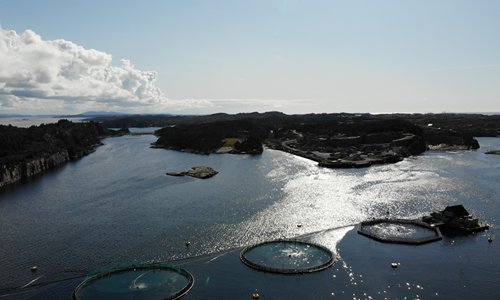Exports of fresh whole salmon last week from Norway to China dropped 34 percent year-on-year to 240 tons, the Norwegian Seafood Council (NSC) said on Thursday.
These developments follow the detection of coronavirus on a cutting board for imported salmon in the Xinfadi food market in Fengtai district in Beijing. That finding led to sales suspension of fresh salmon in the city and beyond.
Preliminary lab researches indicate that the strain of Beijing’s new COVID-19 outbreak was imported. The strain came from Europe, but it doesn’t mean the virus came from a European country and it is not sure that salmon is the source of the outbreak, a Chinese medical expert said on Monday.
There’s “no evidence” that salmon was the host or intermediate host of the new outbreak in Beijing, Shi Guoqing, deputy director of the emergency center under the Chinese Center for Disease Control and Prevention, said.
The Norwegian Food Safety Authority (NFSA) said that based on current knowledge of coronaviruses, infection via food or water is unlikely, so seafood from Norway should be safe to eat.
But observers warned that it would take time for the market to adjust.
The virus was detected on a cutting board, and no one can rule out the possibility that salmon was cut on that board, Cui He, president of the China Aquatic Products Processing and Marketing Alliance, told the Global Times. “There is no doubt that the greater the market share of a product, the greater change it is to be affected,” said Cui.
“Imported salmon prices in China have risen in recent weeks, but now there’s been a decline in total exports of fresh whole salmon,” Victoria Braathen, the NSC’s fisheries envoy to China, told the Global Times on Thursday. She said it was too soon to say what impact the new Beijing outbreak will have on salmon exports.
From January to May, 9,600 tons of salmon were exported from Norway to China, down 5 percent year-on-year, the NSC said. China was the largest market for Norwegian salmon in 2019.
If the restriction on salmon imports persists, economic losses could surpass $100 million, said Eason Li, China general manager at Norwegian seafood processor Hofseth International AS, in a previous interview with the Global Times.
Ministry of Commerce spokesperson Gao Feng said at a press conference on Thursday that increasing the imports of food and agricultural products is an important component of China’s proactive import policy.
“We will work with relevant departments to strengthen communication and coordination with relevant countries to secure the quality of imported food and agricultural products from the source and protect the health and safety of Chinese consumers,” said Gao.
The top three sources of imported salmon to China are Norway, the Faroe Islands and Chile.
Aerial photo taken on September 8 shows a Salmon farm in Bergen, Norway. Photo: Deng Zijun/GT


